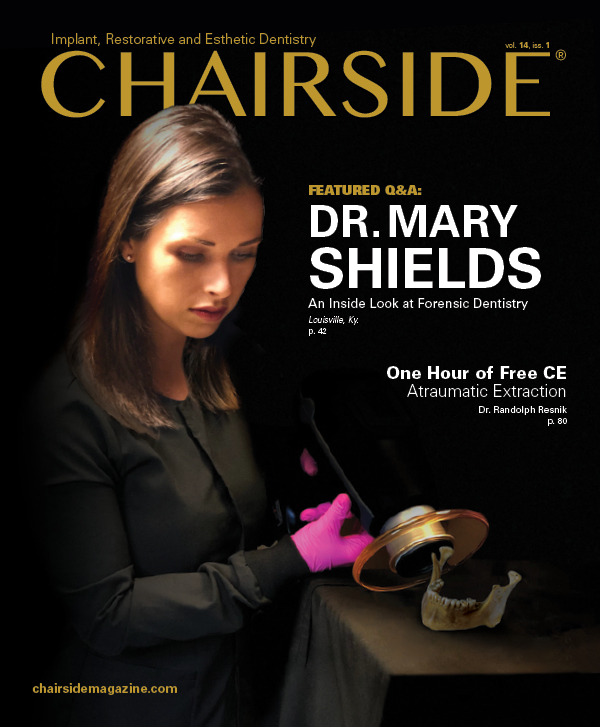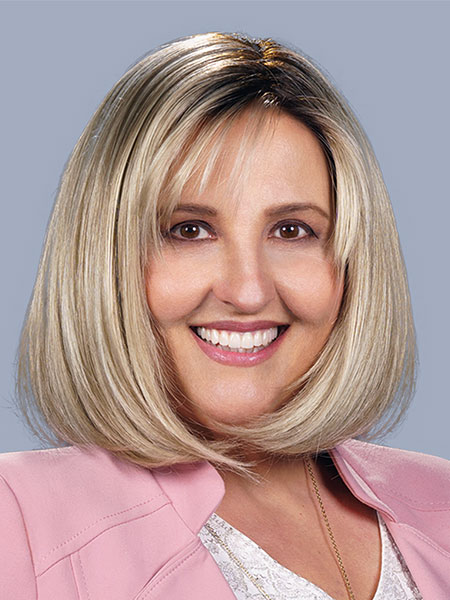A Versatile Material for the Anterior: A BruxZir® Esthetic Case Report
In everyday clinical practice, I am often reminded how quickly technology has improved the landscape of restorative materials. The improvement in the strength, longevity and appearance of veneers and crowns means that the options for patients have expanded well beyond traditional porcelain restorations, which are prone to fracture and can cause wear to the opposing dentition. With the introduction of BruxZir® Esthetic Solid Zirconia, there is now a high-strength zirconia material beautiful enough to be utilized with confidence for veneers and anterior crowns & bridges.
In this clinical case report featuring BruxZir Esthetic, I restore teeth #4–13 using a combination of crowns and veneers. The following photos demonstrate the material’s translucency, versatility, enhanced shade matching and overall ability to transform a patient’s smile from chipped and dark, to beautiful and bright.
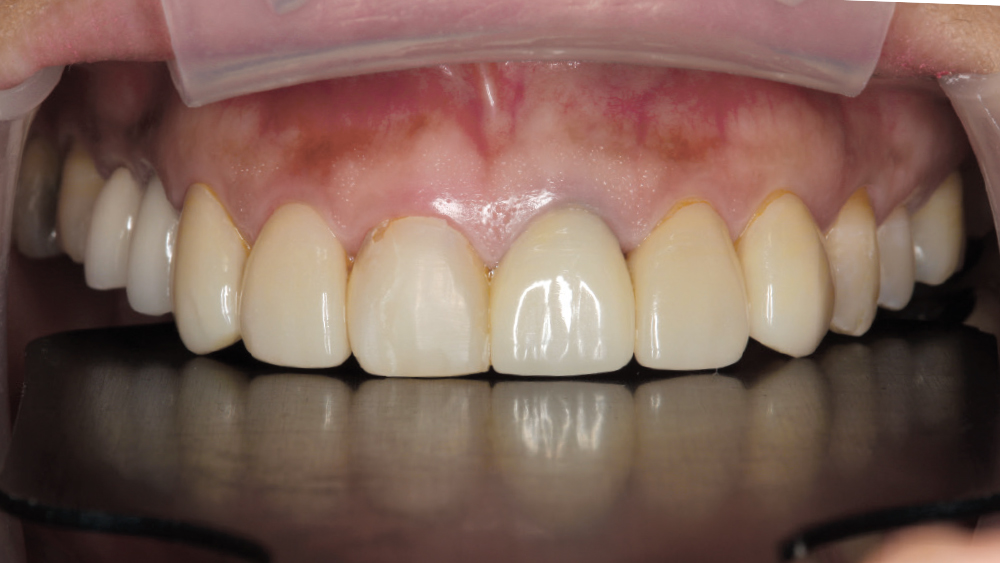
Figures 1a, 1b: The patient had PFMs on teeth #4 & #5, IPS e.max® veneers on teeth #6–8 and #10 and #11, and an IPS e.max crown on tooth #9. The preexisting veneers were all no-prep veneers, meaning that the underlying tooth structure was largely still intact. Considering that veneers bonded to enamel are substantially more capable of absorbing functional stresses than those connected primarily to the dentin layer, veneer treatment was an excellent option for the patient.
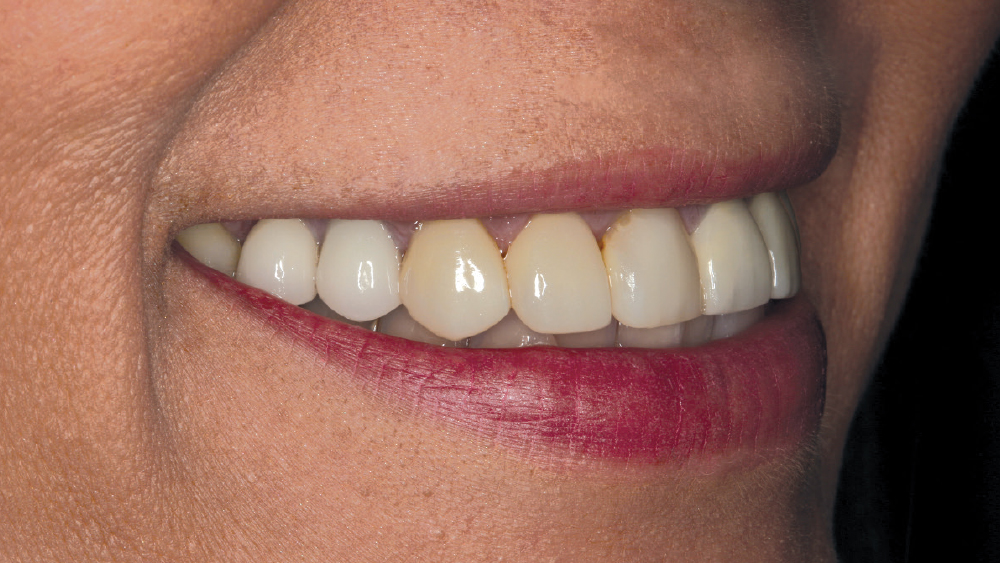
Figures 1a, 1b: The patient had PFMs on teeth #4 & #5, IPS e.max® veneers on teeth #6–8 and #10 and #11, and an IPS e.max crown on tooth #9. The preexisting veneers were all no-prep veneers, meaning that the underlying tooth structure was largely still intact. Considering that veneers bonded to enamel are substantially more capable of absorbing functional stresses than those connected primarily to the dentin layer, veneer treatment was an excellent option for the patient.
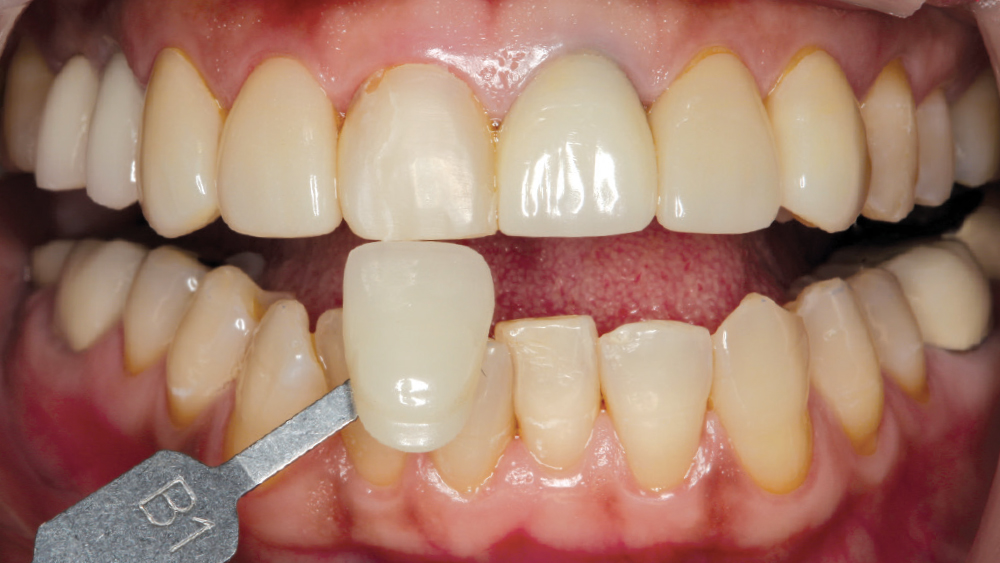
Figures 2a, 2b: The patient expressed great dissatisfaction with the appearance of her smile. Her existing crown on tooth #9 did not blend well with the surrounding restorations. The previous veneers, especially #8, were fractured and chipped. Considering that the veneers were bonded to enamel, it’s likely that the veneers failed due to the weakness of the ceramic material and not due to the quality of the preparation. BruxZir Esthetic restorations are an ideal solution for this case because the material is several times stronger than other esthetically comparable options.
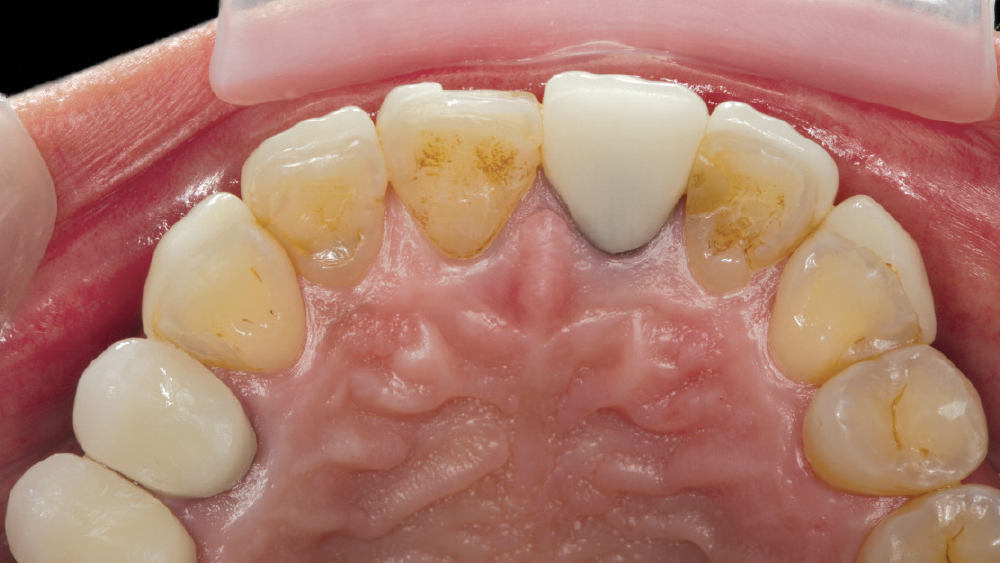
Figures 2a, 2b: The patient expressed great dissatisfaction with the appearance of her smile. Her existing crown on tooth #9 did not blend well with the surrounding restorations. The previous veneers, especially #8, were fractured and chipped. Considering that the veneers were bonded to enamel, it’s likely that the veneers failed due to the weakness of the ceramic material and not due to the quality of the preparation. BruxZir Esthetic restorations are an ideal solution for this case because the material is several times stronger than other esthetically comparable options.

Figure 3: Before devising a case plan, it is imperative that clinicians understand the end result desired by the patient. This patient wanted a very light shade. However, the patient’s tooth #9 had been previously treated with root canal therapy and displayed a dark discoloration. This required that I take the patient from approximately a VITA 3D-MASTER® shade 3M3 to a bleach shade.
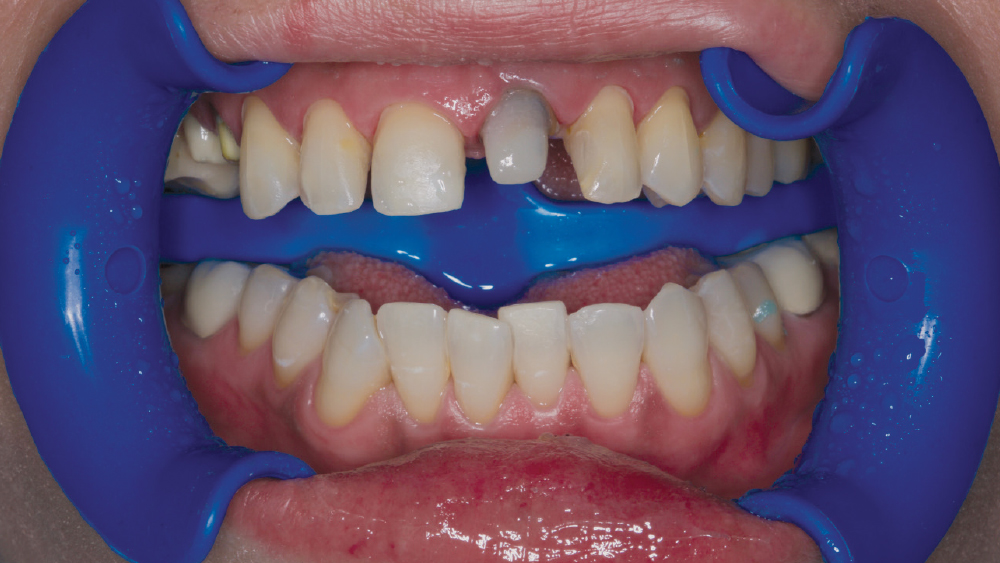
Figures 4a, 4b: After removing the previous crown on tooth #9 along with all remaining crowns and veneers, I assessed how much tooth structure remained. To achieve the dramatically lighter shade that the patient desired, I needed to determine whether the central could be reduced to allow for a minimum of 1.0 mm material thickness. The minimum required thickness for BruxZir Esthetic is 0.7 mm, but to achieve a dramatic shade change such as the one requested by the patient, it’s recommended that the clinician specify a greater thickness to ensure that the restoration blocks out the discolored stump shade. To ensure that the dark shade would not show through the restoration, I also performed external bleaching on the preparation.
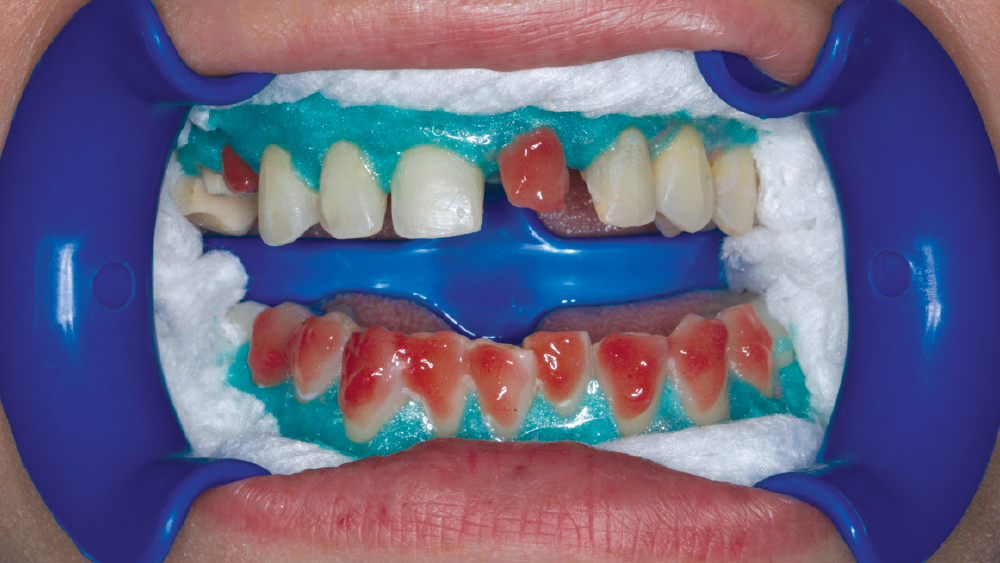
Figures 4a, 4b: After removing the previous crown on tooth #9 along with all remaining crowns and veneers, I assessed how much tooth structure remained. To achieve the dramatically lighter shade that the patient desired, I needed to determine whether the central could be reduced to allow for a minimum of 1.0 mm material thickness. The minimum required thickness for BruxZir Esthetic is 0.7 mm, but to achieve a dramatic shade change such as the one requested by the patient, it’s recommended that the clinician specify a greater thickness to ensure that the restoration blocks out the discolored stump shade. To ensure that the dark shade would not show through the restoration, I also performed external bleaching on the preparation.

Figure 5: After completing the external bleaching, the patient was provisionalized with BioTemps® temporary restorations. BioTemps Provisionals are durable, esthetic patient-specific temporaries made from a preoperative model. Their morphology more accurately matches that of the final restoration, helping to shape the gingiva so there are no surprises on the patient’s final visit. A laser gingivectomy was then performed to contour the gingiva above teeth #7 & #8, with the goal of leveling the gingival architecture with that of #9 & #10. It should be noted that external bleaching of a preparation has the potential to interfere with the bonding protocol of the final ceramic restoration, so it was important to provisionalize for an appropriate amount of time. This temporization period was also extended to ensure that the tissue that underwent the laser gingivectomy was allowed sufficient time to heal, ultimately keeping the patient in BioTemps Provisionals for approximately six weeks.
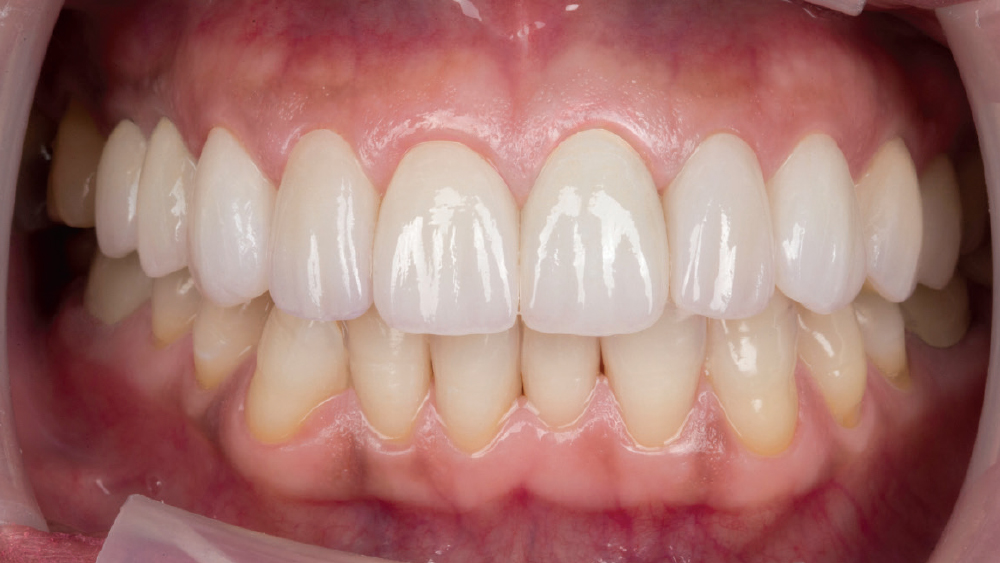
Figure 6: After six weeks of provisionalization, it was time to deliver the final BruxZir Esthetic crowns and Vivaneer™ BruxZir Esthetic Veneers. The overall appearance of the restorations met the patient’s expectations, taking her from an unesthetic dark shade to a very bright, bleached look. Furthermore, the overall durability of BruxZir Esthetic will provide the patient with a long-lasting, beautiful restoration.
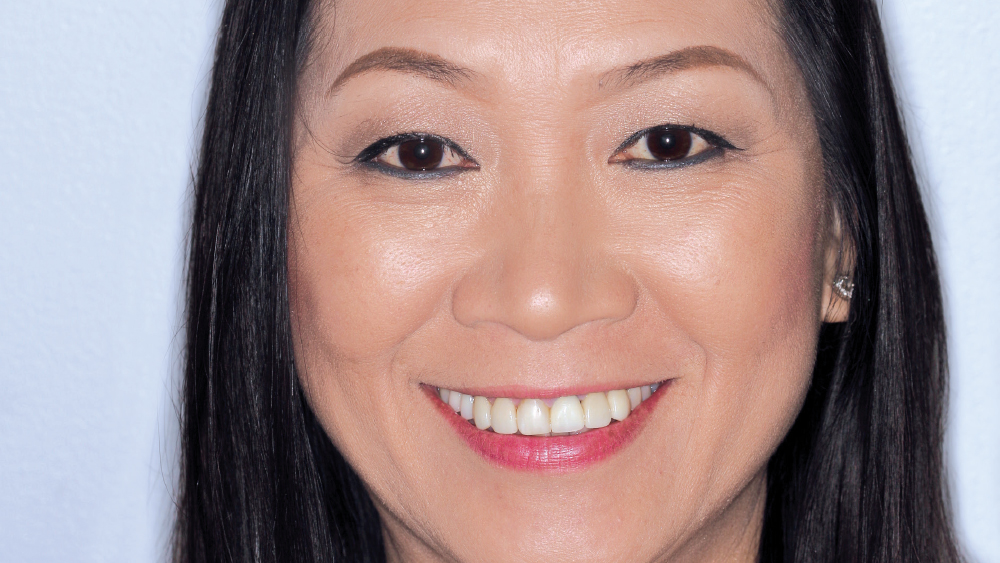
Figures 7a, 7b: Before-and-after images illustrate the patient’s transformation from worn and discolored teeth to a renewed, beautiful smile.
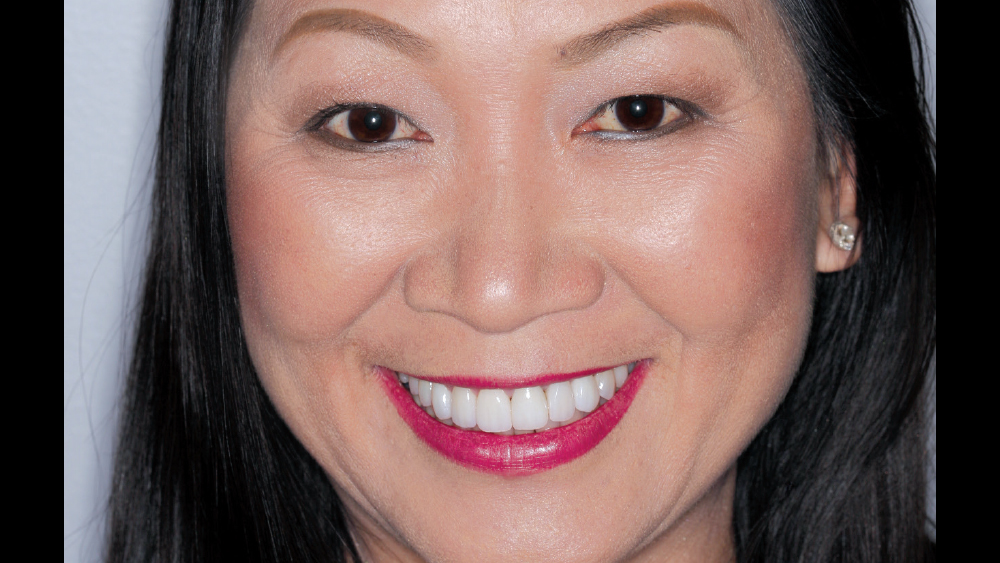
Figures 7a, 7b: Before-and-after images illustrate the patient’s transformation from worn and discolored teeth to a renewed, beautiful smile.
- 1
- 2
- 3
- 4
- 5
- 6
- 7
- 8
- 9
- 10
- 11
CONCLUSION
This patient was extremely pleased with the final outcome. Her smile was transformed to a natural, bright look. BruxZir Esthetic provided a straightforward solution due to its precise fit, lifelike translucency and long-term predictability. By utilizing a conservative approach, as well as a versatile material that addresses the functional and cosmetic needs of the case, we provided a restoration that is attractive to the patient and clinician alike.

